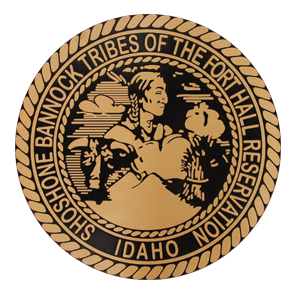Congratulations to Shoshone-Bannock Tribal member Talia Martin for being highlighted in the Office of Energy Efficiency and Renewable Energy (EERE) November Native American Heritage month newsletter:
Talia Martin, Director of the Tribal Department of Energy for the Shoshone-Bannock Tribes, Talia Martin grew up on the Fort Hall Indian Reservation in Idaho with her mother and five siblings, who are all enrolled members of the Shoshone-Bannock tribe.
Talia attended school both on and off the reservation before attending Haskell Indian Nations University, where she received an associate’s degree in natural sciences. She transferred to the University of Kansas, where she earned a bachelor’s in chemistry and a master’s in pharmaceutical chemistry. “My path and passion were in chemistry, and I thought I was going to go into research, but that was not the case. For personal reasons, I eventually came back to the reservation, where I was employed by the tribes as an environmental scientist in 2011.”
As Director of the Tribal Department of Energy for the Shoshone-Bannock Tribe, Talia has worked closely for the past six years with the Fort Hall Business Council—the governing body of the Fort Hall Reservation—to monitor energy issues for her community. Talia’s office also coordinates with other tribal departments and function as a liaison between them and Idaho National Laboratory (INL), ensuring collaboration. “One of the main purposes of our department is overseeing activities that might affect the tribes’ interests, such as safety, sites that are culturally significant, and the environment,” she explained.
What drives her, Talia says, is “a passion for community. There’s a lot of fulfillment in knowing you’re making a big difference.” But there are challenges as well. “The long-term impacts from not having opportunities for education, going back many years—the impacts from boarding schools and not being able to speak our language—those are still historical impacts that tribes, and in particular this area, are still seeing.” Talia explained that lingering historical trauma clouds positive outcomes. “It’s still a social barrier for a lot of our families. We still have a high unemployment rate and a low graduation rate, so we’re still trying to overcome those types of barriers, as well.”
INL’s educational programs, Talia’s work with tribal education departments, and collaboration with 100Kin10—a national organization that brings STEM teachers to classrooms—are making great strides in education and workforce training. Additional support comes from partnerships with universities to reduce tuition costs and make it more affordable for tribal members to attend undergraduate and graduate programs. “It’s a work in progress, but I feel like it’s going in the right direction,” Talia says.
Improved relationships and communication with these institutions are helping to overcome obstacles, as are opportunities from hydrogen and fuel cell technologies and other renewable energy sources. Talia spoke at the Hydrogen Shot Summit in 2021 as part of a panel on regional opportunities. “That was really when hydrogen came into the tribes’ view as something that could be another energy source,” she said. “Now that there’s funding from the bipartisan infrastructure law and the inflation reduction act, and the production tax credits that come along with that legislation, we see hydrogen as a fuel source to consider.”
Talia hopes to see an outreach approach that works better for her community. “Sometimes people come with preconceived ideas of what we need, and it can come across as telling. Suggestions and ideas are great, but unless you actually live here and live with the impacts, I don’t think you have a true appreciation for it. There’s got to be a better understanding of that historical trauma we still live with today.”
Talia does see progress in tribal engagement. “We did have some people reach out to tribal representatives to speak on the impacts, benefits, and questions surrounding hydrogen. And I recently saw the DOE hydrogen roadmap and their initiative around it, and you do see a lot of outreach and engagement to different local governments, and they include tribal governments in there.”
With all the progress that has occurred and despite barriers that still exist, Talia remains hopeful for the education and workforce opportunities in her community.
Here is the link to the website: https://www.energy.gov/…/november-spotlight-native…

